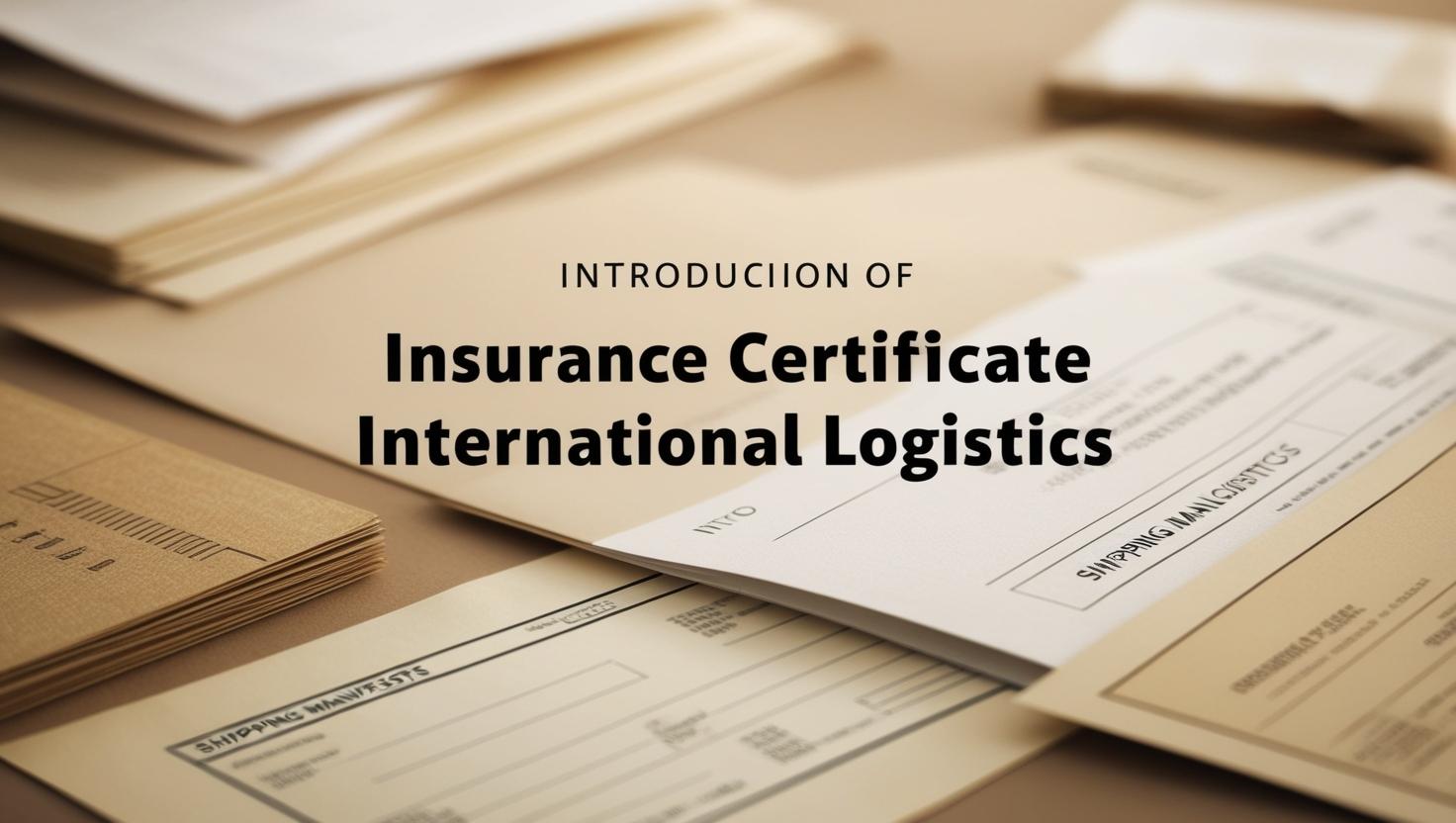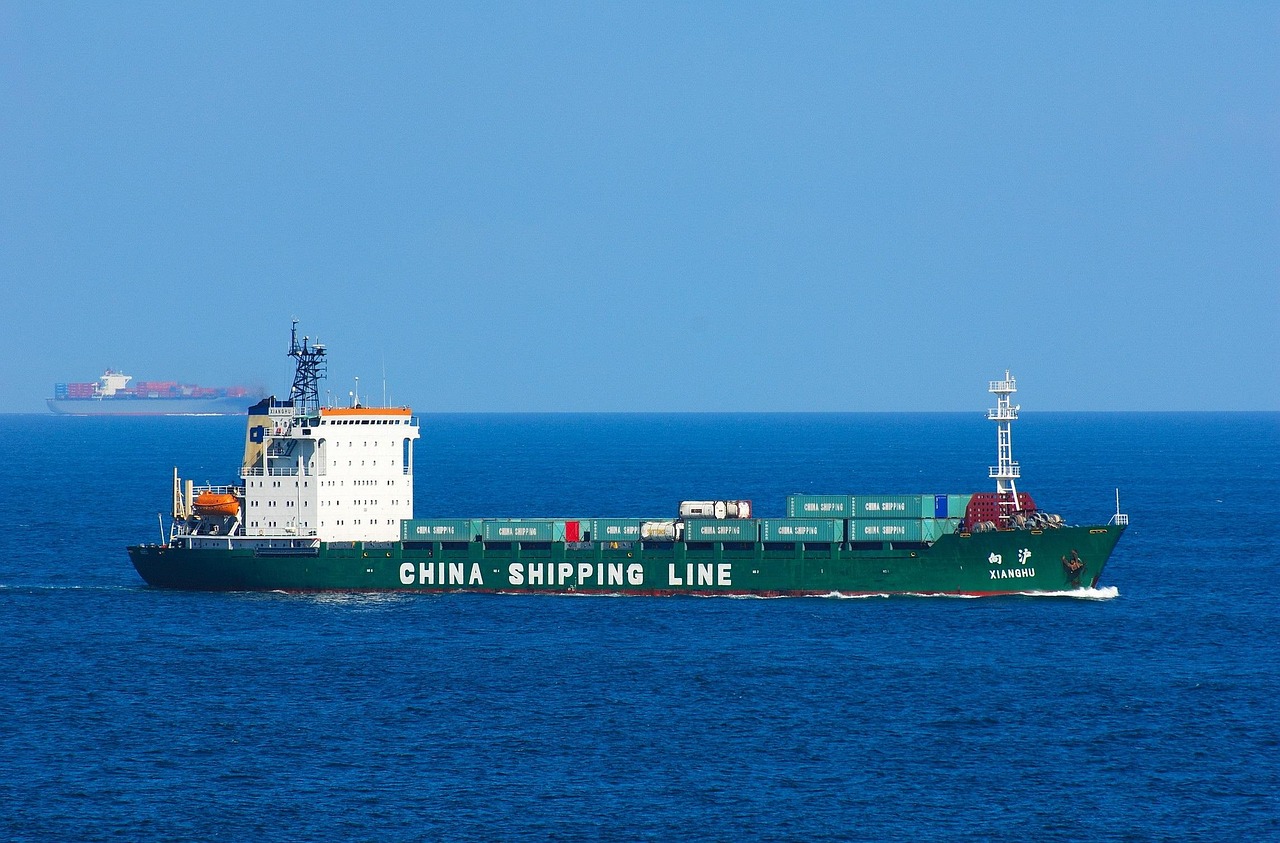Insurance Certificates 101: Everything Beginners Need to Know

An insurance certificate is a document that proves you have coverage for your goods during transit, and it plays a vital role in logistics by ensuring financial protection against unexpected losses. The global cargo transportation insurance market is growing, expected to reach $69.59 billion by 2029, highlighting the increasing importance of Insurance Certificates and Logistics Insurance in safeguarding goods.
What Is an Insurance Certificate?

Definition and Purpose
An insurance certificate is a document that provides proof of insurance coverage for specific goods or activities. It acts as a summary of the insurance policy, outlining key details such as the type of coverage, policy limits, and the insured party. This document does not replace the actual insurance policy but serves as a quick reference for verifying coverage.
Think of it as a snapshot of your insurance policy. It shows the essential details without including the full terms and conditions.
Regulatory agencies and industry standards define the purpose of an insurance certificate clearly. For example:
It is an informational document issued by an insurance company to confirm the existence of an insurance policy.
It highlights basic policy coverages and limits at the time of issuance.
It does not alter the terms of the insurance contract or provide any contractual rights to the certificate holder.
By presenting this document, you can demonstrate that your goods or operations are insured, which is often a requirement in logistics and transportation.
When Are They Used?
Insurance certificates are used in various scenarios within logistics and transportation. You might need one when shipping goods internationally, working with a freight forwarder, or entering into a contract with a carrier. They are especially important when dealing with high-value shipments or industries with strict regulatory requirements.
For example, if you’re shipping electronics overseas, the carrier may request an insurance certificate to confirm that the goods are covered against potential risks like theft or damage. Similarly, freight forwarders often require this document to ensure that their liability is limited in case of unforeseen events.
Key Information Included in an Insurance Certificate
Insured Party and Policy Details
An insurance certificate always includes the name and details of the insured party. This section identifies who holds the policy and ensures clarity about the coverage provided. You will also find the policy number here, which acts as a unique identifier for the insurance agreement. This information is crucial when verifying the authenticity of the certificate or filing a claim.
For example, if you are shipping goods internationally, the certificate will list your name or your company’s name as the insured party. This ensures that any claims or disputes are directed to the correct entity. Always double-check this section to confirm that the details match your records.
Coverage Period and Nature of Goods
The certificate specifies the start and end dates of the insurance policy. This period defines when the coverage is active. If your shipment falls outside this timeframe, it won’t be protected. Additionally, the document outlines the nature of the goods being insured. This detail ensures that the policy aligns with the type of items you are transporting, whether they are electronics, perishable goods, or hazardous materials.
For instance, if you are shipping fragile items, the certificate should clearly state this. This ensures that the insurer understands the risks involved and provides appropriate coverage.
Claims Contact Information and Signature
This section includes essential contact details for filing claims. It often lists the insurer’s name, phone number, and email address. You’ll also find the signatures of the insurance company and broker, which verify the document’s authenticity.
Here’s an example of the information typically included:
Field | Description |
|---|---|
Date | Shows when the certificate of insurance is issued, including the start and expiry date of the policy. |
Insurer | Name and particulars of the insurance broker issuing the certificate. |
Policy Holder | Name and details of the individual or organization being insured, including the policy number. |
Signatures | Contains signatures of the insurance company and the insurance broker, verifying the document's authenticity. |
Additional Information | May include communication means for policy cancellation notifications. |
This section ensures you know who to contact in case of a claim and confirms the document’s legitimacy.
Types of Insurance Certificates in Logistics

Understanding the types of insurance certificates in logistics helps you choose the right coverage for your shipments. Each type addresses specific risks and responsibilities, ensuring your goods remain protected throughout the supply chain.
Cargo Insurance
Cargo insurance protects your goods from risks during transit. It covers losses caused by theft, damage, or unforeseen events. This type of insurance is essential for businesses that ship valuable freight. Without it, recovering from financial losses can be challenging.
Cargo insurance ensures financial security for shippers and consignees. It allows businesses to maintain operations even after unexpected incidents.
You can customize cargo insurance to match the unique risks of your supply chain. For example, shipping electronics may require coverage for theft, while transporting perishables might need protection against spoilage.
This insurance plays a vital role in risk management strategies, making it a cornerstone of logistics planning.
By securing cargo insurance, you safeguard your shipments and build trust with your partners. It demonstrates your commitment to protecting goods and meeting contractual obligations.
Freight Forwarders Liability Insurance
Freight forwarders liability insurance covers the responsibilities of freight forwarders when handling shipments. As a freight forwarder, you act as an intermediary between shippers and carriers. This role comes with risks, including potential claims for lost or damaged goods.
This insurance protects you from liabilities arising from errors, omissions, or negligence. For instance, if goods are damaged due to improper handling, freight forwarders liability insurance can cover the costs. It also ensures compliance with industry regulations, which often require proof of such coverage.
If you work with a freight forwarder, ask for their insurance certificate. This document confirms that they have adequate coverage, giving you peace of mind when entrusting them with your cargo.
SLVS Insurance
SLVS (Shippers’ Interest Liability Valuation Service) insurance provides additional coverage for shippers. It bridges the gap between the carrier’s liability and the actual value of the goods. Carriers often have limited liability, which may not fully compensate for high-value shipments.
For example, if a carrier’s liability is capped at $500 per shipment, but your goods are worth $5,000, SLVS insurance covers the difference. This type of insurance is particularly useful for international shipments, where liability limits vary by country.
SLVS insurance ensures that you receive fair compensation in case of loss or damage. It complements other types of coverage, creating a comprehensive safety net for your cargo.
Tip: Always review the terms of SLVS insurance to understand its scope and limitations. This helps you avoid surprises during the claims process.
How to Obtain an Insurance Certificate
Steps to Acquire Coverage
Acquiring an insurance certificate involves a straightforward process. Follow these steps to ensure you meet all requirements:
Understand Your Needs: Identify the minimum coverage required for your shipment. For instance, international transportation may demand specific liability limits or additional coverage for high-value goods.
Review Existing Policies: Check your current insurance policies to confirm they meet the necessary coverage limits. This step helps you avoid purchasing redundant or insufficient coverage.
Request the Certificate: Contact your insurance agent or broker with the details of your shipment. Include information like the nature of the goods, the transportation route, and any specific requirements from the requesting party.
Submit Applications (if needed): For certain types of coverage, such as a Certificate of Financial Responsibility, you may need to submit an application. For example, Form FMC-131 must be filed with the Federal Maritime Commission at least 60 days before service.
Verify Accuracy: Once the certificate is issued, review it carefully. Ensure all details, including the coverage period and insured party information, are correct before sharing it with stakeholders.
Working with Brokers or freight forwarder
Obtaining an insurance certificate often starts with reaching out to brokers or freight forwarders. These professionals act as intermediaries, helping you navigate the complexities of insurance policies.
YQN Logistics, as global digital logistics expert, specialize in understanding your unique needs and matching you with the right coverage. For example, if you require specific transportation insurance, YQN can guide you toward policies tailored to your industry. For free consultation, welcome to contact info@yqn.com.
FAQ
What is the purpose of a certificate of insurance in logistics?
A certificate of insurance confirms your cargo is covered during transit. It ensures compliance with logistics requirements and protects against potential losses or damages.
Can a freight forwarder provide insurance for my cargo?
Yes, a freight forwarder can arrange insurance for your cargo. However, you should verify the specific insurance coverage they offer to ensure it meets your needs.
How do I verify the authenticity of an insurance certificate?
Check the details like the insured party, policy number, and insurer's contact information. Contact the insurance company directly to confirm its validity.
See Also
Understanding SCAC Codes: Essential Insights for Shippers
Essential Strategies for Mastering Incoterms 2025
Transforming Challenges to Success: Our Client's Freight Journey
Three Essential Tools for Precise Wan Hai Container Tracking
Carriers Announce Peak Season Surcharges Up to $750 for 2025

Shipping with YQN - Global Logistics at Your Fingertips
YQN has established subsidiaries worldwide, covering North America, Latin America, Southeast Asia, and the Middle East. We have partnered with 300+ top shipping and airline companies and have access to 3500+ high-quality supplier resources. YQN also has a professional customer service and fulfillment team of over 500 people to provide more worry-free and efficient international logistics services.
Contact Us
You can also email us at info@yqn.com.

